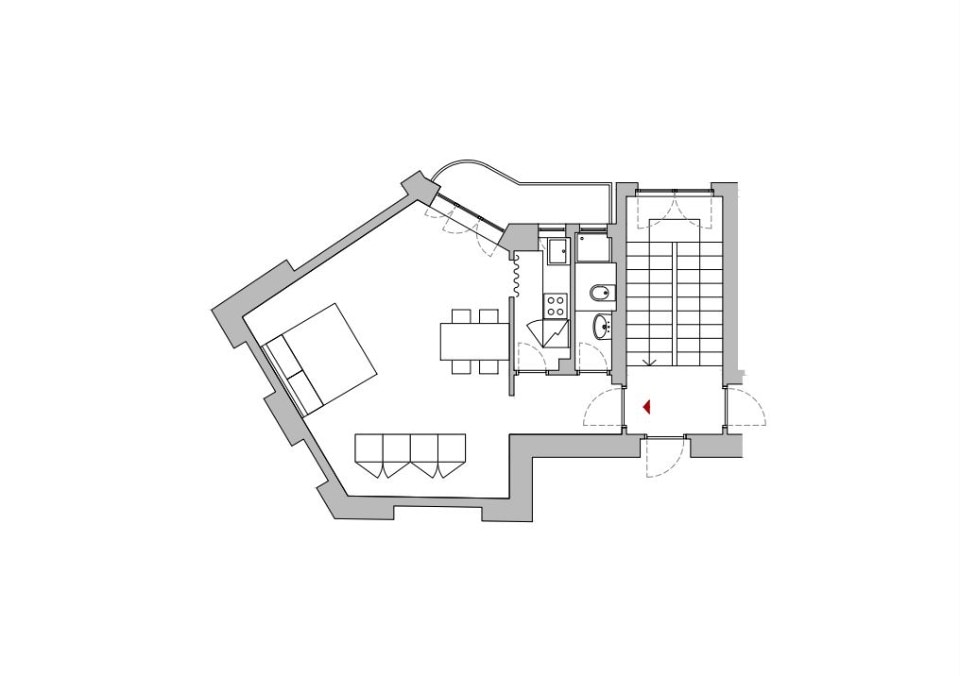As the debate swirls around the effects of short-term rental platforms on cities and local areas, living is transforming before our eyes. In Italy, where the percentage of property ownership is estimated to exceed 70 per cent, the crises of recent years have turned this market into an important source of private income. The Casa Celeste project, completed in Milan in 2023, is an adaptation to this new use exploring an architectural form that is (perhaps inevitably) becoming a new typology.
Few fixed elements, flexibility and finishes that are handcrafted and contemporary: these principles guided Tenet’s low-budget rethinking of a 45-square-metre unit located at the fold in one of the blocks comprising the Istituto Fascista Autonomo Case Popolari complex in the San Siro Baracca district (1942), designed by Vincenzo Columbo. The designers describe the floor plan as “a geode” evoking “the forma urbis of Milan”, with the service layout rotated and transformed into a volume that extends towards the main room.
.jpg.foto.rmedium.jpg)
The bathroom is clad with glossy 5 x 15 centimetre tiles with irregular surfaces, arranged to create continuity between the two rooms. This surface is interrupted in the day-night area, where the original black-and-white terrazzo tiles are maintained, and then resumes in the kitchen. Here, the tiles cover the two main shelves running parallel to the room’s elongated plan. The tiling rises by the hob and sink to act as a splashboard before descending on the edge, in reference to Franco Albini’s apartment for Caterina Marcenaro in Palazzo Rosso, Genoa (1961).
The tiles also define the three main fixed furnishings: the alcove bed screened by a blue curtain; the sofa-container; and the table. With the exception of the service volume – which features a cement-based skim coat – the walls are finished with a warm, textured white tonachino plaster normally used for exteriors. Both these materials create an “unfinished” effect intended as part of the project’s identity.


.jpg.foto.rbig.png)

.jpg.foto.rmedium.png)
.jpg.foto.rmedium.png)
.jpg.foto.rmedium.png)
.jpg.foto.rmedium.png)
.jpg.foto.rmedium.png)
.jpg.foto.rmedium.png)
.jpg.foto.rmedium.png)
.jpg.foto.rmedium.png)
.jpg.foto.rmedium.png)
.jpg.foto.rmedium.png)
.jpg.foto.rmedium.png)
.jpg.foto.rmedium.png)
.jpg.foto.rmedium.png)
.jpg.foto.rmedium.png)
.jpg.foto.rmedium.png)

